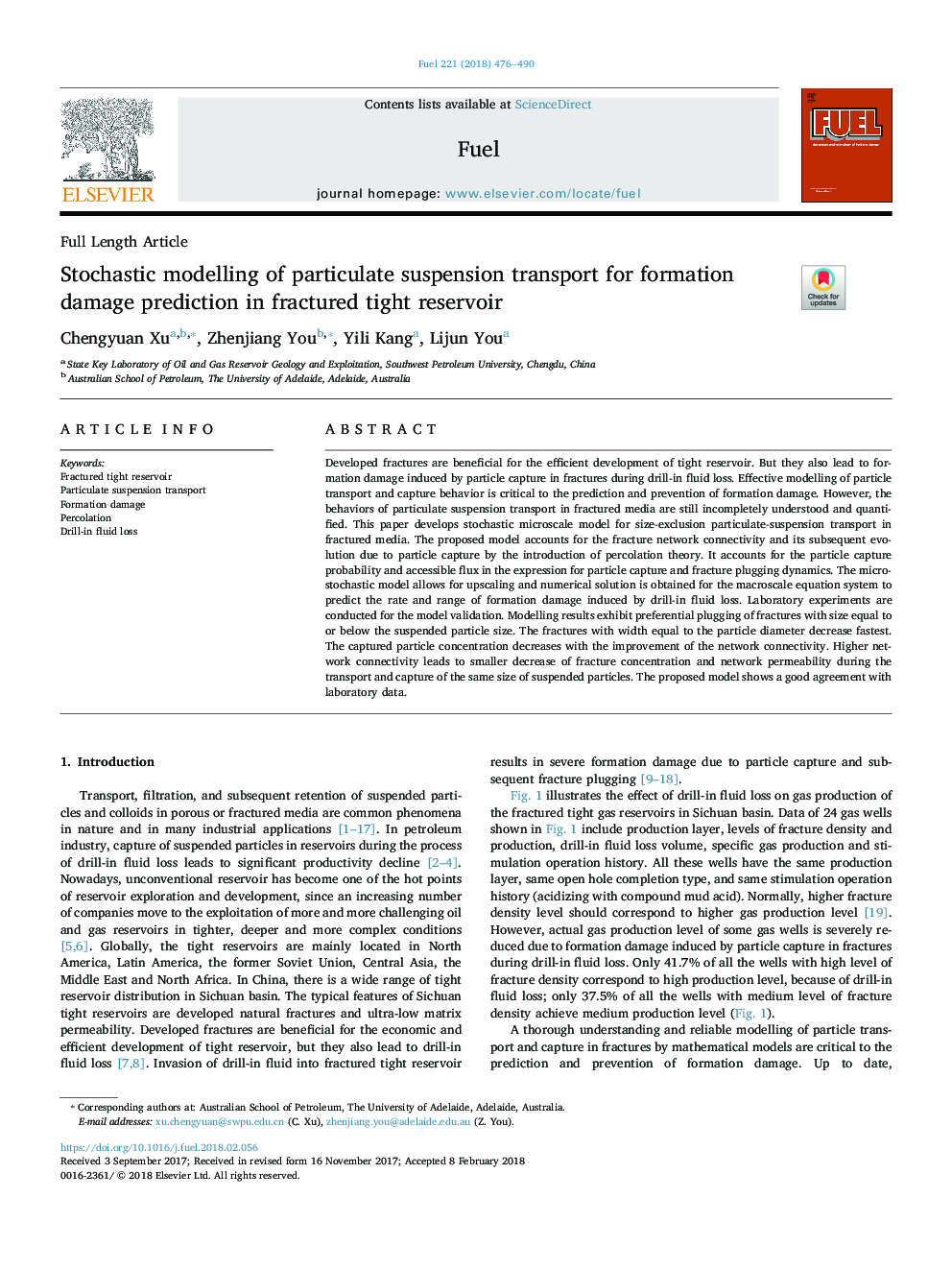| Article ID | Journal | Published Year | Pages | File Type |
|---|---|---|---|---|
| 6631581 | Fuel | 2018 | 15 Pages |
Abstract
Developed fractures are beneficial for the efficient development of tight reservoir. But they also lead to formation damage induced by particle capture in fractures during drill-in fluid loss. Effective modelling of particle transport and capture behavior is critical to the prediction and prevention of formation damage. However, the behaviors of particulate suspension transport in fractured media are still incompletely understood and quantified. This paper develops stochastic microscale model for size-exclusion particulate-suspension transport in fractured media. The proposed model accounts for the fracture network connectivity and its subsequent evolution due to particle capture by the introduction of percolation theory. It accounts for the particle capture probability and accessible flux in the expression for particle capture and fracture plugging dynamics. The micro-stochastic model allows for upscaling and numerical solution is obtained for the macroscale equation system to predict the rate and range of formation damage induced by drill-in fluid loss. Laboratory experiments are conducted for the model validation. Modelling results exhibit preferential plugging of fractures with size equal to or below the suspended particle size. The fractures with width equal to the particle diameter decrease fastest. The captured particle concentration decreases with the improvement of the network connectivity. Higher network connectivity leads to smaller decrease of fracture concentration and network permeability during the transport and capture of the same size of suspended particles. The proposed model shows a good agreement with laboratory data.
Related Topics
Physical Sciences and Engineering
Chemical Engineering
Chemical Engineering (General)
Authors
Chengyuan Xu, Zhenjiang You, Yili Kang, Lijun You,
